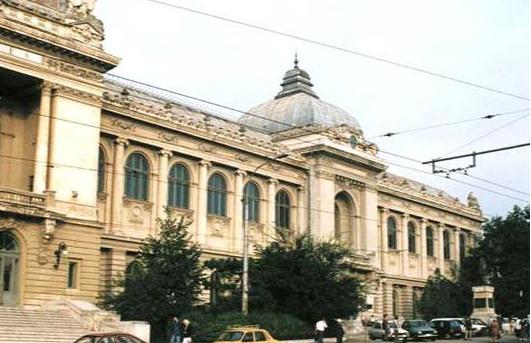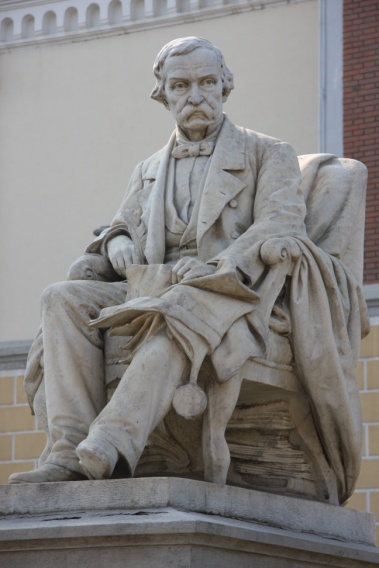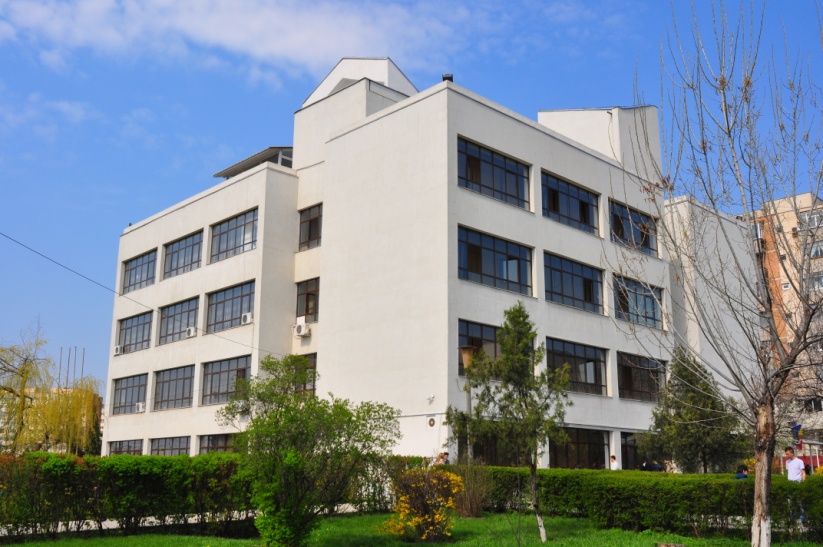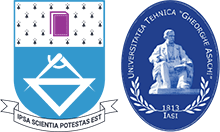
The city of Iasi, the main political and cultural hub in Moldavia, was and still is one of the most important academic centres in Romania. The city is the birth place of the most noble and wise ideas concerning the national unity and liberty. It is the place where the “the enlightenment century” concept was born, the place where many important and prominent figures in Romanian history evolved and worked. The cultural tradition of the city of Iasi is clearly marked by the engineering education. A very significant historic event took place on November 15th, 1813, when the first “class of civil engineering and land surveying” was founded as part of Academia Domneasca. Between 1834-1847 the “Academia Mihaileana” marked a new corner stone in the history of Romanian higher education. The first class of applied mathematics was set up within the Academy, the graduates receiving diplomas in civil engineering. On November 8th, 1840, a document issued on the 5th anniversary of the Academia Mihaileana stated the structure of Moldavian educational system at that time:
- Primary schools in the capital city and province;
- The College from Iasi;
- The Academy with its three faculties: Philosophy, Law and Theology, as well as The School of Civil Engineering.
In 1843, the new project of higher education separates, for the first time, the theoretical sciences, within the Faculty of Philosophy from the technical sciences grouped into two sections: Civil Engineering and Agricultural Sciences. The Civil Engineering section was taught during a 2 year period of time of and among the studied topics one could find: Algebra and Theoretical and Applied Geometry, Solid Mechanics, Fluid Mechanics, Architectural Drawing, Theory of Civil Engineering, Road Science, etc.

In 1844, due to a suggestion made by Gheorghe Asachi, the duration for the civil engineering studies increased to 3 years. The curricula of the Civil Engineering Section included besides High Order Mechanics and Mathematics topics like Descriptive Geometry, Architecture, Making of Roads and Bridges. In 1848 Gheorghe Asachi set up “The Applied School for Engineers and Constructors”.
In 1860 the University of Iasi was established, which had also the right to confer engineering diplomas. In fact, the engineering education took place at the School of Industrial Power Engineering (from 1910), later divided into The Electrotechnical Institute (1912) and the Department of Technological Chemistry (1911). The year 1937 marks a turning point in the history of higher education in Iasi due to the 205.660 / 03.12.1937 decision of the National Education Ministry that laid the foundation of The “Gheorghe Asachi” Polytechnical School of Iasi as a distinct institution of higher engineering education.
Based on the Enactment no. 989 from November 13th, 1941, published in the Official Journal of Romania no.270, the Faculty of Civil Engineering was set up at the Polytechnical Institute of Iasi.
After the 1948 education reform, the civil engineering education in Iasi has passed through a continuous development and diversification period. There were established several curricula based on attendance type day, evening and long distance courses, duration of studies (long or short term), admission requirements as well as the number of specialization fields.
During the academic year 1949-1950 the fields of education at the Faculty of Civil Engineering were: Civil and Industrial Engineering and Roads and Urbanistic Works. Starting from 1951-1952 the Roads and Urbanistic Worksspecialization becomes the Department of Roads only to be renamed three years later (1954) The Department of Roads and Bridges.
In 1961-1962 the Department of Hydrotechnical Engineering was created and which was later transferred -on October 1st, 1963- to the Faculty of Hydrotechnical Engineering, newly founded within the Polytechnical Institute of Iasi.

In 1966 the long distance study program comes to an end and in 1968 the Department of Roads and Bridges becomesThe Department of Railways, Roads and Bridges keeping its name until today. During the academic year 1969-1970 new educational offers are advanced: day and evening study programs for engineering assistants in the fields of Civil, Industrial and Agricultural Engineering and Railways, Roads and Bridges. One year later (1970) the Conductor architects program starts with a duration of 3 years. According to their academic records, forty percent of the graduates continued their studies within the “Ion Mincu” Architectural Institute in Bucharest. The last generation to graduate from this program was in 1983. In 1973 the evening studies program in the field of Civil, Industrial and Agricultural Engineering came to an end.
In 1977 a new education program is advanced:Building Services Engineering. A part of this study program, namely the evening classes for engineering assistants is transferred from the Faculty of Mechanical Engineering to The Faculty of Civil Engineering.
During the academic year 1978-1979 the evening study program for Civil, Industrial and Agricultural Engineering is started once again and in 1982 the same educational offer is extended to the field of Railways, Roads and Bridges.
In 1990 the Department of Architecture is founded with a duration of 6 years. In 1991 and 1992 the civil engineering study programs taught in English and French, respectively, are set up. Additionally, in 1991 the 2nd Construction College was founded, offering a 3 year study program in the fields of Technology of Constructions and Urbanistic Works. From 1994, a new field is added, Management and Economy of Constructions.
During the academic year 1993-1994 the name of the faculty changes into of The Faculty of Civil Engineering and Architecture. The study program Urban Engineering was founded in 1995 with a duration of studies of 5 years. From 2005-2006 the Department of Architecture becomes the Faculty of Architecture and the name changes once again in Faculty of Civil Engineering and Building Services. Starting from 2009 the education offer was further extended by introducing new educational modules and new master programs. Currently the Faculty offers 10 Bologna type master programs, all of them being recognized and certified by ARACIS.





